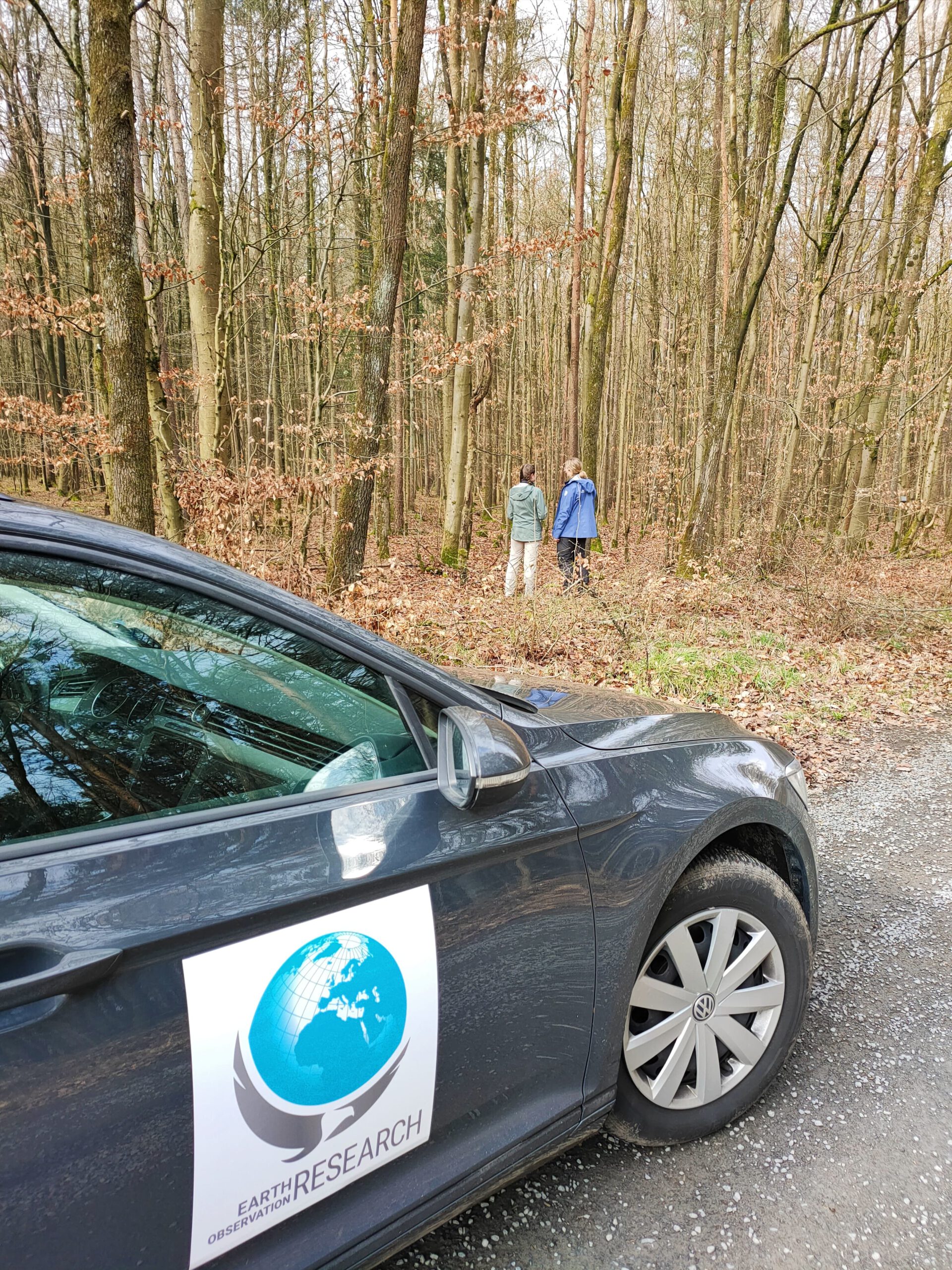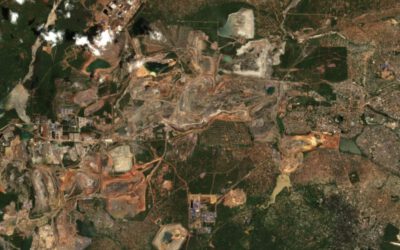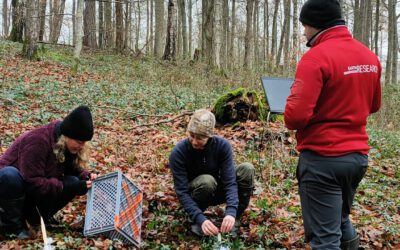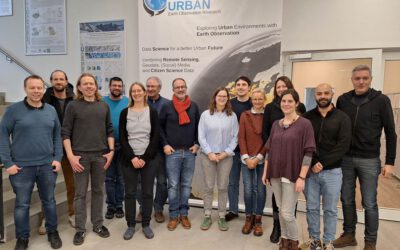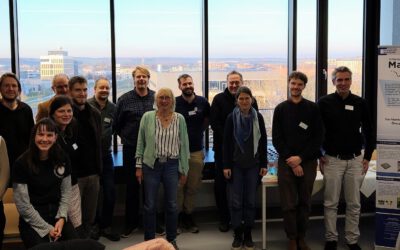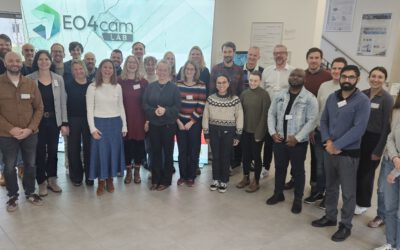Today, staff from the Earth Observation Research Cluster conducted a field trip to Sailershausen to visit three fully inventoried forest plots and to discuss examples of remote sensing applications with the forestry administration of the University of Würzburg. The goal of this research is to apply the R package TreeCompR to these plots using Airborne LiDAR data and compare the results with tree-by-tree in-situ measurements.
This comparison aims to calibrate and refine an airborne LiDAR data-based approach and thus improve the application in forest inventory and forest management planning. By improving the accuracy of this method, we can better assess the necessary measures for sustainable forest management.
The work is being carried out within the EO4CAM project, with the University Forest serving as a pilot region.

